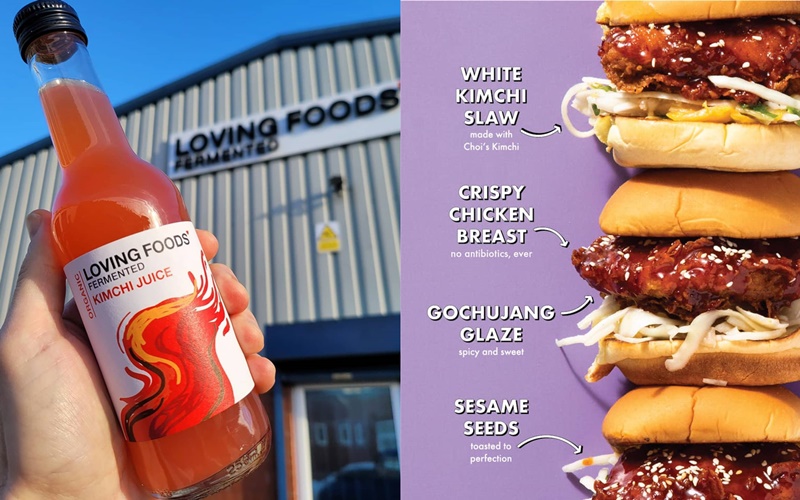
The Ministry of Agriculture, Food and Rural Affairs conducted an online survey last year from August to September on residents of 16 cities worldwide that found kimchi to be the most frequently consumed Korean food (33.6%) abroad. The photo shows people in the U.K. trying kimchi bruschetta. (World Institute of Kimchi)
By Xu Aying and Lee Jihae
Video = YouTube channel of Seoul Sister's Kimchi
Shake Shack in January launched a new burger with baek (white) kimchi added instead of cabbage. The U.S. burger chain sells a "new Korean-inspired chicken sandwich" made with gochujang (red pepper paste) for USD 7.19.
"We thought the Korean-inspired menu would be an awesome one to share with our guests across the Pacific," the company said.
The Korean startup Food Culture Lab began selling kimchi seasoning in April last year on Amazon. Within two weeks, the product topped all other chili powder in sales.
Many comments posted on Amazon about the seasoning said it went well with many dishes. People posted videos of themselves on YouTube putting it on pasta, pizzas and sausages.
The seasoning is priced at USD 9-18 on Amazon, and sales as of January had reached 100,000 units at home and abroad.
Kimchi, which Koreans usually consume alongside rice, is appearing in various forms abroad like juice, burgers and snacks. The spicy condiment's use in seasonings and relishes is also playing a role in diversifying global culinary tastes.
Organic food producers Gold Mine of the U.S. and Loving Foods of the U.K. sell kimchi juice, which is new even to Koreans. The concoction is made by fermenting cabbage, carrot and chili and can be consumed as a drink or sauce.
Gold Mine called kimchi "the fiery, spicy fermented cabbage" that is "quickly emerging as a part of the global food trend toward distinctive, punchy flavors that are penetrating mainstream menus."
The company said its kimchi juice is for those "who are not ready to embrace the really hot chili pepper flavor of Korean-style kimchi," adding that the juice "has just the right amount of 'heat' for the American palate."

British organic food maker Loving Foods sells a kimchi juice (left). The U.S. burger franchise Shake Shack offers a burger using baek (white) kimchi instead of cabbage. (Loving Foods, Shake Shack's Facebook page)
Side dishes of toast topped with kimchi-flavored coleslaw or salsa are also examples of how kimchi is being combined with other cuisines to create flavors never available before.
Min Sung-gi, a senior researcher at the Industrial Technology Research Group of the World Institute of Kimchi in Gwangju, said, "Various efforts related to kimchi are more active abroad than at home," adding, "This is because kimchi is a vegetarian food, contains healthy ingredients such as garlic and ginger, and is rich in (the probiotic) lactobacillus. People are also captivated by its flavor and aroma if they eat it several times."
"It goes along with various foods around the world, so it's good for globalization," he said. "If kimchi maintains its essence as a fermented vegetable and is added with an ingredient that matches the tastes of locals around the world, it'll spread more quickly."
From August to September last year, the Ministry of Agriculture, Food and Rural Affairs conducted an online survey on residents of 16 cities worldwide, finding that kimchi is the most frequently consumed Korean food with 33.6% of the votes.
xuaiy@korea.kr